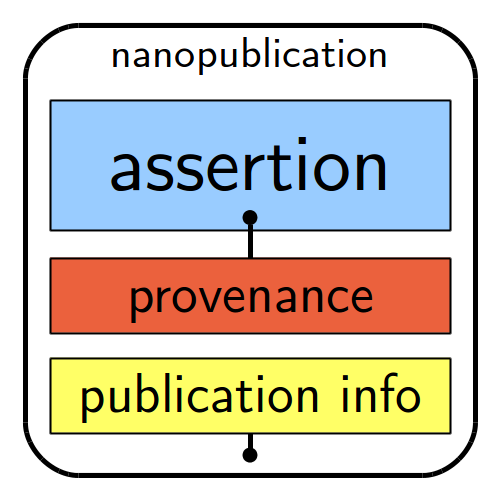Paolo Bufalini (Rome, 1915-2001), Italian politician and partisan, was one of the protagonists of post-WWII politics in Italy. Graduated in law, he held leading positions in the Italian Communist Party (PCI) besides being a member of the Parliament and of the Senate of the Republic uninterruptedly from 1963 to 1992. Alongside politics, Bufalini cultivated his interest in classics, and especially Latin literature. His translations of Horace's odes are particularly appreciated (A Leuconoe, Vanni Scheiwiller, 1982 and 1993).
Between 1981 and 1991, Bufalini kept a private notebook which he titled Appunti 1981–1991 (transl. Notes 1981–1991). The contents of the notebook are linked to significant moments of Paolo Bufalini's intellectual and social life: excerpts from literary works, personal notes and comments, narrations of events, unpublished translations from Latin into Italian. Given the private nature of the notebook, the relationships between the various textual components (text-text, text-comment, text-translation, translation-translation) are not explicitly declared. The same applies to the sources of the cited texts.
After Bufalini's death, the notebook was donated to the Department of Classic Philology and Italian Studies of the University of Bologna, where a team of scholars transcribed it and identified the sources of the 196 cited texts which include works by Dante, Manzoni, Petrarch, Alfieri, Belli, Campana, Campanella, Carducci, Croce, Passavanti, Pontano, Ripamonti, Tasso (Italian literature); Catullus, Lucretius, Martial, Horace, Seneca, Tacitus, Virgil, Cicero, Ennius, Juvenal, Justinian, Naevius, Pliny the Younger, Quintilian, Suetonius (Latin literature); Flaubert, Hegel, Mann, Shakespeare, Tolstoj, Toqueville, Yourcenar (other European literatures).

The semantic digital scholarly edition of Paolo Bufalini's notebook is a project of the Department of Classical Philology and Italian Studies (FICLIT) and of the Digital Humanities Advanced Research Centre (/DH.arc) of the University of Bologna.
The primary aims of the edition are to identify, analyse and enhance the complex network of texts (quotes, comments, translations, narrations, etc.) characterizing the notebook.

The XML/TEI model developed for Paolo Bufalini's notebook aims to represent the relationships between the textual fragments of the notebook (citations, comments, translations, etc.) and to link the local authority files to external datasets. The main types of encoded relationships are:
In order to represent and enhance the complex network of relationships among the texts and the authors of the notebook, the research team decided to produce a digital scholarly edition that exploits Semantic Web technologies. The result is an edition based entirely on linked open data which:
The digital scholarly edition of Paolo Bufalini's notebook features two interpretative layers: the author, who juxtaposed texts and highlighted mutual influences, and the editors, who have analysed and formalized Bufalini's choices. In order to distinguish the different layers and associate each RDF statement with its provenance, we employed named graphs and, in particular:
Nanopublications allow for the representation of linked open data along with their provenance and publication details. Each set of RDF statements (e.g. representing an author's influence over another) is accompanied by three additional graphs: one containing information about the provenance of the assertions (e.g. Bufalini who notices an influence of one author over another and cites supporting texts); another containing information about the digital scholarly edition; and a third graph describing the nanopublication itself and linking together the four graphs. The model adopted make it possible to cite each single RDF statement separately from the edition, but in such a way that there is no loss of context. Furthermore, an integrity key is associated to the nanopublications so allow for references to a particular version of the edition through time.

Khun, T., Nanopublications. Provenance-Aware Linked Data Publishing, 2015.
The example below shows a nanopublication (serialized in Trig) expressing that a passage of Lucretius' De Rerum Natura influenced a passage of Alessandro Manzoni's Inni Sacri.
@prefix np: <http://www.nanopub.org/nschema#> .
@prefix pb: <https://w3id.org/bufalinis-notebook/> .
@prefix quote: <https://w3id.org/bufalinis-notebook/quote/> .
@prefix person: <https://w3id.org/bufalinis-notebook/person/> .
@prefix generation: <https://w3id.org/bufalinis-notebook/generation/quote/> .
@prefix oa: <http://www.w3.org/ns/oa#> .
@prefix prov: <http://www.w3.org/ns/prov#> .
@prefix hico: <http://purl.org/emmedi/hico/> .
pb:infl-quot-007-to-quot-005h-head {
pb:infl-quot-007-to-quot-005h-np a np:Nanopublication .
pb:infl-quot-007-to-quot-005h-np np:hasAssertion :infl-quot-007-to-quot-005h-assertion .
pb:infl-quot-007-to-quot-005h-np np:hasProvenance :infl-quot-007-to-quot-005h-provenance .
pb:infl-quot-007-to-quot-005h-np np:hasPublicationInfo :infl-quot-007-to-quot-005h-pubInfo .
}
pb:infl-quot-007-to-quot-005h-assertion {
quote:quot-005h prov:wasGeneratedBy generation:quot-005h .
generation:quot-005h a prov:Generation .
generation:quot-005h prov:qualifiedInfluence pb:infl-quot-007-to-quot-005h .
pb:infl-quot-007-to-quot-005h a prov:Influence .
pb:infl-quot-007-to-quot-005h rdfs:label "Lucr. Rer. Nat. 1, 38–40 in A. Manzoni, Inni Sacri, Il nome di Maria" .
pb:infl-quot-007-to-quot-005h prov:agent quote:quot-007 .
quote:quot-005h a oa:Annotation .
quote:quot-007 a oa:Annotation .
}
pb:infl-quot-007-to-quot-005h-provenance {
pb:infl-quot-007-to-quot-005h-assertion prov:wasGeneratedBy pb:infl-quot-007-to-quot-005hint-act .
pb:infl-quot-007-to-quot-005hint-act a hico:InterpretationAct .
pb:infl-quot-007-to-quot-005hint-act hico:isExtractedFrom quote:quot-007 .
pb:infl-quot-007-to-quot-005hint-act hico:isExtractedFrom quote:quot-005h .
pb:infl-quot-007-to-quot-005hint-act hico:hasInterpretationCriterion pb:comparison-of-texts .
pb:infl-quot-007-to-quot-005hint-act hico:hasInterpretationType pb:similarity-between-texts-recognition .
pb:infl-quot-007-to-quot-005hint-act prov:wasAssociatedWith person:pb .
}
pb:infl-quot-007-to-quot-005h-pubinfo {
pb:infl-quot-007-to-quot-005h-np prov:wasAttributedTo pb:cspc .
pb:infl-quot-007-to-quot-005h-np prov:generatedAtTime "2018-01-01T00:00:01Z"^^xsd:dateTime .
}
The main graph includes about 8K triples representing textual phenomena and bibliographic information. The edition reuses the Web Annotation data model to represent texts (quotes, translations, comments); selected properties from Dublin Core and from the OWL2DL version of FRBR provided by the SPAR Ontologies are used to link cited texts, cited entities (e.g. persons), and other related fragments which precedes, follow, complete or translate the texts. The same ontologies are used also for bibliographic information. The relations between the cited texts and the citing entities (i.e. the texts of the notebook) are formalized through CiTO. The following examples, in N3, show an excerpt of the notebook citing lines from Il Nome di Maria by Manzoni and the full reference to the cited work:
@prefix citation: <https://w3id.org/bufalinis-notebook/citation/> .
@prefix cito: <http://purl.org/spar/cito/> .
@prefix dcterms: <http://purl.org/dc/terms/> .
@prefix excerpt: <https://w3id.org/bufalinis-notebook/excerpt/> .
@prefix foaf: <http://xmlns.com/foaf/0.1/> .
@prefix frbr: <http://purl.org/vocab/frbr/core#> .
@prefix oa: <http://www.w3.org/ns/oa#> .
@prefix owl: <http://www.w3.org/2002/07/owl#> .
@prefix pb: <https://w3id.org/bufalinis-notebook/> .
@prefix prism1: <http://prismstandard.org/namespaces/1.2/basic/> .
@prefix quote: <https://w3id.org/bufalinis-notebook/quote/> .
@prefix rdf: <http://www.w3.org/1999/02/22-rdf-syntax-ns#> .
@prefix rdfs: <http://www.w3.org/2000/01/rdf-schema#> .
quote:quot-005h a oa:Annotation ;
oa:hasBody excerpt:bibl004h ;
oa:hasTarget citation:am-inni-sacri-il-nome-di-maria ;
oa:motivatedBy pb:quotation .
citation:am-inni-sacri-il-nome-di-maria a cito:Citation ;
cito:hasCitedEntity excerpt:bibl004h ;
cito:hasCitingEntity <https://w3id.org/bufalinis-notebook/page/4> .
excerpt:bibl004h a <http://purl.org/spar/fabio/Excerpt> ;
rdfs:label "Inni sacri, Il nome di Maria, verse 82–84" ;
prism1:startingPage <https://w3id.org/bufalinis-notebook/page/4> ;
frbr:partOf <https://w3id.org/bufalinis-notebook/text/am-inni-sacri/il-nome-di-maria> ;
rdf:value """
<section xmlns="http://www.tei-c.org/ns/1.0">
<l>O degli afflitti scampo,</l>
<l>
<ref rend="underline" target="#quot-007-1">inclita</ref> come il sol, terribil come</l>
<l>oste schierata in campo.</l>
</section>
"""^^rdf:XMLLiteral.
pb:quotation rdfs:label "quotation" .
@prefix dcterms: <http://purl.org/dc/terms/> .
@prefix frbr: <http://purl.org/vocab/frbr/core#> .
@prefix owl: <http://www.w3.org/2002/07/owl#> .
@prefix pb: <http://w3id.org/bufalinis-notebook/> .
@prefix rdf: <http://www.w3.org/1999/02/22-rdf-syntax-ns#> .
@prefix rdfs: <http://www.w3.org/2000/01/rdf-schema#> .
<http://w3id.org/bufalinis-notebook/text/am-inni-sacri> a <http://purl.org/spar/fabio/Book> ;
rdfs:label "Inni sacri" ;
frbr:realizationOf <http://w3id.org/bufalinis-notebook/work/am-inni-sacri> .
<http://w3id.org/bufalinis-notebook/text/am-inni-sacri/il-nome-di-maria> a <http://purl.org/spar/fabio/Expression> ;
rdfs:label "Inni sacri, Il nome di Maria" ;
frbr:partOf <http://w3id.org/bufalinis-notebook/text/am-inni-sacri> ;
frbr:realizationOf <http://w3id.org/bufalinis-notebook/work/am-inni-sacri/il-nome-di-maria> .
<http://w3id.org/bufalinis-notebook/work/am-inni-sacri/il-nome-di-maria> a <http://purl.org/spar/fabio/Poem> ;
rdfs:label "Inni sacri, Il nome di Maria" ;
dcterms:creator <http://w3id.org/bufalinis-notebook/person/am> ;
frbr:partOf <http://w3id.org/bufalinis-notebook/work/am-inni-sacri> ;
= <http://viaf.org/viaf/292682306> .
<http://w3id.org/bufalinis-notebook/work/am-inni-sacri> a <http://purl.org/spar/fabio/WorkCollection> ;
rdfs:label "Inni sacri" ;
dcterms:creator <http://w3id.org/bufalinis-notebook/person/am> ;
= <http://viaf.org/viaf/177864710>,
<http://worldcat.org/entity/work/id/3888291> .
Bufalini's ideas on the relations among the texts and the authors of the notebook constitute 10% (about 800 RDF triples) of the knowledge base. In order to represent such ideas, we employed HiCO, an ontology extending PROV-O with the possibility of specifying a source for the statement, the criteria adopted for formulating the statement, and the type of statement as shown in the example below:
@prefix pb: <https://w3id.org/bufalinis-notebook/> .
@prefix quote: <https://w3id.org/bufalinis-notebook/quote/> .
@prefix person: <https://w3id.org/bufalinis-notebook/person/> .
@prefix prov: <http://www.w3.org/ns/prov#> .
@prefix hico: <http://purl.org/emmedi/hico/> .
pb:infl-quot-007-to-quot-005h-assertion prov:wasGeneratedBy pb:infl-quot-007-to-quot-005hint-act .
pb:infl-quot-007-to-quot-005hint-act a hico:InterpretationAct .
pb:infl-quot-007-to-quot-005hint-act hico:isExtractedFrom quote:quot-007 .
pb:infl-quot-007-to-quot-005hint-act hico:isExtractedFrom quote:quot-005h .
pb:infl-quot-007-to-quot-005hint-act hico:hasInterpretationCriterion pb:comparison-of-texts .
pb:infl-quot-007-to-quot-005hint-act hico:hasInterpretationType pb:similarity-between-texts-recognition .
pb:infl-quot-007-to-quot-005hint-act prov:wasAssociatedWith person:pb .
Bufalini illustrates a relation between two texts by highlighting the common features (e.g. a term or a concept appearing in both texts), whereas when claiming an influence of an author over another, he cites secondary sources in support. To formalize authoritativeness (i.e. the sources, either primary or secondary, on which a claim is based or which support the claim), CiTO is employed.
For full technical description of the digital edition see Daquino, M., Giovannetti, F., & Tomasi, F. (2019). Linked Data per le edizioni scientifiche digitali. Il workflow di pubblicazione dell'edizione semantica del quaderno di appunti di Paolo Bufalini. Umanistica Digitale, 3(7), http://doi.org/10.6092/issn.2532-8816/9091